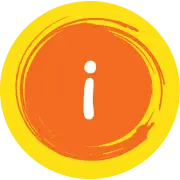Arts, Language, and Movement

Arts, Language, and Movement Curriculum Overview
ITDS views the arts, foreign languages, and movement education as an integral part of a child’s development, and has a team of seven full-time teachers who engage regularly with children at every grade level in six different disciplines: Dance, music, physical education and health, theater, Spanish, and visual arts. When possible, the Arts, Language, and Movement team works with each other and with classroom teachers to create lessons and units that help children draw connections between different disciplines, such as exploring the art of Kandinsky and the math of ratios together or combining lessons in geography, Latin American dance, and Spanish.
All of our Art, Language, and Movement curricula are aligned with national standards. Dance, theater, music, and visual arts are based on the National Core Arts Standards. PE follows the DC Physical Education standards which are connected to the SHAPE national standards. Spanish is aligned with standards from the American Council for the Teaching of Foreign Languages.
PK3, PK4 and kindergarten: The joy of arts, language, and movement
The days of children in our early childhood program are filled with music, art, language, and movement, and the Arts, Language, and Movement team joins the teaching teams at scheduled times during the day to bring even more specialized activities in the fields of visual arts, Spanish, music, and theater. Hands-on, inquiry-based learning experiences introduce our youngest students to basic concepts of rhythm, the sounds and meanings of Spanish words, the world of colors and lines, and engaging theater games that build their concentration, social awareness, and imaginative skills. In kindergarten, ITDS students also begin taking classes in physical education and health, where they are introduced to new ways to control their bodies and manipulate objects while being introduced to simple rules of games and the importance of sportsmanship and cooperation.
Arts Language & Movement 1-6
In their journey from first grade to sixth, students are given opportunities to explore all six areas of our Arts, Language, and Movement curriculum, so that they learn more about the fields and begin to define which types of expression are most enlivening to them.
Each year, students at these grade levels take courses in PE, Spanish, music, and the visual arts. Our physical education and health curriculum, in compliance with the DC Healthy Schools Act, introduces children to increasingly more complex games and exercises as they mature. In Spanish, we use an innovative, story-telling approach called TPRR, which mimics the way children naturally learn language, rather than reduce Spanish acquisition to a grammatical exercise, and make sure to engage children as much as possible so they they are able to build on the vocabulary and structures they learned the year prior. These lessons are made more relevant by complementary studies of different nations and cultures each year. Every student takes visual arts course in grades 1-6, following a scope that leads them through explorations of colors and compositions with a range of materials, while also being introduced to great artists from different cultures and backgrounds. Our music curriculum builds on the hands-on experiences they had in early childhood and introduces them to additional music genres, techniques, and theories, including the introduction of recorders in 5th grade.
Students in grades 1-3 also continue to explore theater, with the creation of class plays; and students in grades 4-6 circle back to the joy of dance and movement that was introduced in early childhood, with particular emphasis on African dance forms.
Arts Language & Movement 7-8
7th and 8th graders are now at an age where autonomy and agency are increasingly important, and to meet their stage of development, they choose from our Arts, Language, and Movement electives. Dance students deepened the skills of creating, performing, responding, and connecting to dance as they explore different genres and cultural expressions, and learn to choreograph their own dance pieces, including a piece on what it means to be an upstander and prevent bullying. Our 7th and 8th grade Spanish Language and Global Citizenship course, launched in 2020, provides an immersive introduction to the Spanish language, through which students gain proficiency in the areas of speaking, listening, reading, and writing through interactive storytelling and creative dialogue. The 7th and 8th-grade music class focuses on sight-singing; musical composition, ukulele, and piano/keyboard.
Students who choose the visual arts l to learn various techniques in drawing and watercolor techniques, and begin to engage in art critique and the ability to identify elements and principles of art in works of their own. Theater students dive into how to use their voices, bodies, and imaginations to explore how and why people tell stories on stage. They will be exposed to a multitude of styles of theatrical performances from around the world while pondering how communities affect art, and how art can affect communities. In PE & Health, students engage in cardio workouts including Zumba, dance, and Tae Bo to work on their physical endurance and have fun while learning the skills and rules of sports like soccer and basketball.
